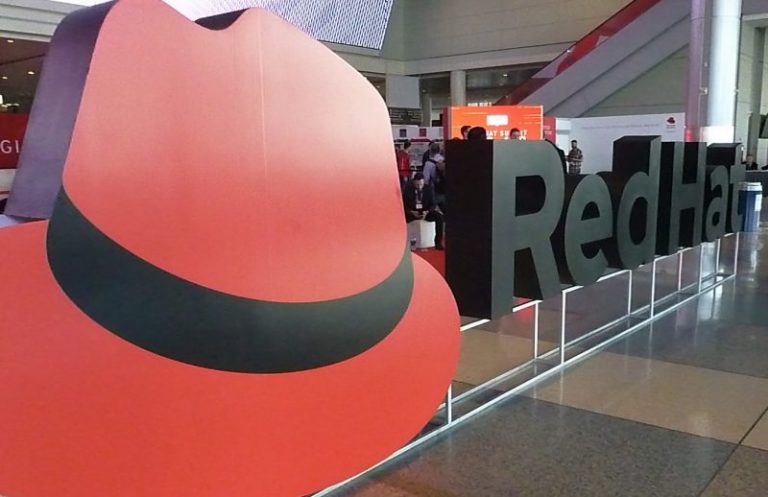 CLOUD
CLOUD
 CLOUD
CLOUD
 CLOUD
CLOUD
Red Hat Inc.’s beginning dates back to the mid-1990s when co-founder and software engineer Marc Ewing wore his red Cornell University lacrosse hat in the computer lab and people seeking help would just “look for the guy in the red hat.” Nearly 30 years later, people are still looking to Red Hat for support.
Whether it involves the company’s signature product, Red Hat Enterprise Linux, OpenShift or the Ansible Automation platform, Red Hat’s open source-driven modern information technology stack occupies a central place in global enterprise computing. More than 90% of global Fortune 500 companies are powered by Red Hat’s technology today, and it’s a safe bet that most, if not all of them, are taking a good long look at how to integrate artificial intelligence into the business.

Red Hat CEO Matt Hicks talks with theCUBE about AI and open-source computing models.
Many will turn to Red Hat for answers, and the company, which was acquired by IBM Corp. in 2019, is prepared to take its cues from open-source innovation, much as it did with Linux decades ago.
“How you saw it grow and people contributing, and that impact and power with it. [We’re] seeing the exact same thing in AI,” said Matt Hicks, president and chief executive officer of Red Hat, during an interview last year with theCUBE, SiliconANGLE Media’s livestreaming studio. “But it’s a hundred times faster than I experienced with Linux. I think it will become the innovation model for AI. And as an open-source guy, it’s an exciting thing that I think will impact development and operations, different core business models that we work with.”
Red Hat spelled out its vision for enterprise AI during the KubeCon + CloudNativeCon NA gathering in November. This included the importance of using AI effectively by combining numerous technologies and leveraging the collaborative nature of the open-source community. (* Disclosure below.)
The company has backed this up with several announcements in the ensuing months. Ansible Lightspeed with IBM Corp.’s generative AI watsonx Code Assistant became generally available, and it included a training database of submissions from the Ansible Galaxy community of contributors. Recommendations made by generative AI provide references for three to five training sources per automation suggested by the tool.
During MWC Barcelona in February, Red Hat expanded on its vision of an open hybrid cloud powered by AI with edge computing solutions for AI-based applications on private 5G networks. Working with partners, such as EnterpriseWeb LLC, Red Hat is seeking to build on its vision for real-time data analysis at the edge.
“There are a lot of players in the gen AI LLM space, including a fair amount of open-source activity,” Jim Mercer, program vice president at IDC, said in an interview with SiliconANGLE for this story. “However, I think the role Red Hat is carving out is in providing an integrated platform for building, training, tuning, deploying and monitoring AI applications and foundation models. Also, given its background in open source and providing open-source security and a secure open-source software supply chain, I think a lot of the expertise they have in the application security space can create an additional opportunity to transition nicely to securing MLOps or MLSecOps.”
A key part of Red Hat’s MLOps strategy involves its work with OpenShift, an integrated application platform for management of the AI and machine learning lifecycle across hybrid cloud and edge environments. Red Hat has been positioning OpenShift as a central resource to simplify the infrastructure complexity of application development.
Over the past several months, Red Hat has enhanced OpenShift to include new features, such as hosted control planes on bare metal servers and virtualization solutions. And the company has expanded its partnership with Dell Technologies Inc. to automatically deploy and maintain OpenShift on top of the Dell Universal Storage Layer to provide consistent and centralized management across a variety of storage services.
It’s platform-as-a-service for cloud-native workloads split between on-premises and the public cloud, and the collaboration between Dell and Red Hat signals a move toward creating a more satisfying operating environment in the hybrid model.
“The Dell perspective is that this is far more than an operating system on a bare metal server. It’s about creating an experience,” Rob Strechay, managing director and principal analyst at theCUBE Research, wrote in a recent report on the Dell/Red Hat partnership. “Red Hat has been about hybrid for a while now, and this is an extension of that. Hybrid is no longer just about consistent technology; it’s more about the experience.”
To provide the kind of experience that enterprises expect in a hybrid model, Red Hat has built technologies to leverage the container orchestration software Kubernetes. The company has been particularly active in two open-source Kubernetes projects over the past year. One is Kubeflow, an open-source platform for machine learning and MLOps on Kubernetes. Red Hat OpenShift AI provides a visual editor for automating data science pipelines and fostering experimentation by developers that is based on Kubeflow.
Another is KubeVirt, a development platform designed to build and deploy applications in containers and virtual machines utilizing a shared environment. KubeVirt is provided by Red Hat as a feature of OpenShift, and the company is working with data-reliant organizations to migrate virtual machines into Kubernetes environments.
Behind this approach is a Red Hat strategy to improve the developer experience by dialing down the complexity, an important consideration when it comes to Kubernetes and its complicated framework. In March, Red Hat released Podman Desktop 1.8, a tool that allows developers to view Kubernetes-based objects in local clusters. The major hyperscalers have their own tools for Kubernetes as well, and Red Hat is not standing by idly but instead building a portfolio of offerings for the container platform.
“We know that the adoption of containers and Kubernetes is where new application development is heading,” Mercer told SiliconANGLE. “In our most recent DevOps survey, we asked respondents to indicate how they deliver their applications, and the top responses were containers and Kubernetes. So, I think this speaks to the market opportunity, but certainly, it is a competitive space where there is ‘coopetition’ between Red Hat and other Kubernetes offerings from the large cloud hyperscalers.”
This level of “coopetition” has been channeled into an extensive list of partnerships that Red Hat has formed with the Big Three cloud providers. Red Hat and Google Cloud have been collaborating for over a decade. OpenShift, OpenShift Data Science and Ansible Automation run on the Google Cloud platform.
When Denmark’s largest retailer, Salling Group, migrated to Red Hat OpenShift on Google Cloud, the company noted improved resilience when dealing with spikes in demand for major “Black Friday” sales events.
The Red Hat OpenShift platform on Amazon Web Services Inc. was launched in 2021 as a turnkey application development platform. In November, Red Hat enhanced its AWS offering to include hosted control planes that would more effectively use the hyperscaler’s cloud resources. OpenShift on AWS enables models to be built in the cloud and then deployed on-premises.
Red Hat and Microsoft Corp. have teamed up to provide a choice of hybrid cloud deployments and jointly developed solutions through Azure. For the Andreani Logistics Group in Brazil, the collaboration between Red Hat and Microsoft enabled the e-commerce management firm to spin up OpenShift clusters in hours instead of weeks to meet sudden demand.
A combination of OpenShift partnerships and continued adoption of the Kubernetes platform has propelled Red Hat to a prominent place in the enterprise computing conversation. The growth of AI will add additional momentum for the company as developers turn increasingly to open-source models, a supply chain that Red Hat has been curating for nearly 30 years.
“This is a company that’s very confident in itself and I think its confidence has grown over time as open source has taken hold,” Paul Gillin, enterprise editor for SiliconANGLE, said during a CUBE discussion at last year’s Red Hat Summit. “I saw a statistic that 97% of commercial software packages now have some open-source component. It’s the way software, at least infrastructure software, will be developed in the future. I think Red Hat feels vindicated by that. Red Hat seems to be in a groove and knows what its customers want, and it is responding.”
(* Disclosure: TheCUBE is a paid media partner for Red Hat Summit. Neither Red Hat Inc., the sponsor of theCUBE’s event coverage, taking place from May 7-9, nor other sponsors have editorial control over content on theCUBE or SiliconANGLE.)
Support our mission to keep content open and free by engaging with theCUBE community. Join theCUBE’s Alumni Trust Network, where technology leaders connect, share intelligence and create opportunities.
Founded by tech visionaries John Furrier and Dave Vellante, SiliconANGLE Media has built a dynamic ecosystem of industry-leading digital media brands that reach 15+ million elite tech professionals. Our new proprietary theCUBE AI Video Cloud is breaking ground in audience interaction, leveraging theCUBEai.com neural network to help technology companies make data-driven decisions and stay at the forefront of industry conversations.